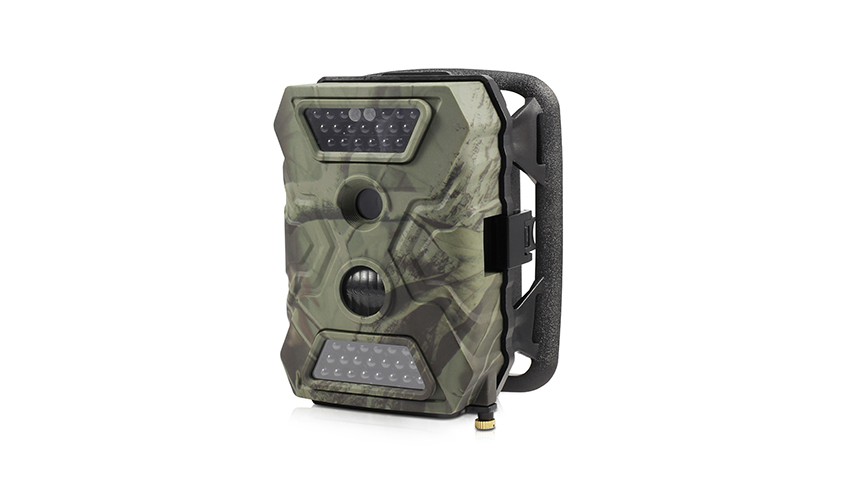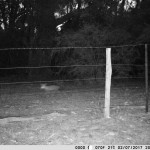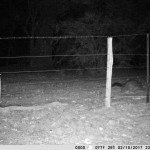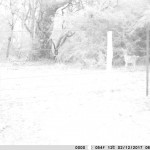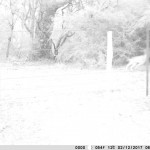Swann OutbackCam – $199.95
You may not have seen one in action, but if you regularly head out into state forests and national parks, there’s a good chance you’ve come within coo-wee of a camera trap.
Camera traps employ modern digital imaging and sensor technology bundled with a rugged, portable casing to allow the user to set one up in a desired location and survey the wildlife (or people), that go by. Like comparable devices, camera traps are available with a variety of different features and requisite prices and, until recently, have largely remained in the domain of the professional user. They have been employed for wildlife surveys, security purposes and pest management to great effect, but is there a use case for hobbyists or recreational clubs?
In order to learn a little more about the technology, we recently got our hands on the Swann OutbackCam to have a go at camera trapping.
The Swann OutbackCam presents at the entry-level end of the range (which quickly rises in price point to above $700 in some cases). For this money, you get a camera capable of 12 megapixel stills and 1080p video at 15 frames per second.
Without a built-in lithium-ion battery, the OutbackCam instead requires AAs (not included), with the option to install either four or eight depending on how long you’re hoping to have the camera operating for, which in turn may be impacted by how active the device is during the period of operation. The camera itself is housed in the front half of the casing, with the second half acting as a mount to be secured to a tree, post or other suitable anchor point. When these two halves are separated, you gain access to a small screen and associated buttons on the back of the camera, allowing you to adjust settings and playback captured data (keeping in mind this screen is quite small, making it difficult to make out the real quality of any images or video).
Like the batteries a memory source is also a required extra for this device, so it helped that we had an SD card handy for the job. After those elements were installed, it was a simple case of selecting the options we wanted to test and affixing the camera mount at a likely location.
NB: The choice of location for a camera trap experiment such as this is of critical importance. Firstly, it’s advisable to have obtained written consent from the local land manager or relevant authority when using these devices on land that is not your own. Secondly, you should choose a location based on where you’re most likely to get a result for the type of subject you hope to capture.
We found the setting up phase of the device to be the simplest part of the process by far. Figuring out the best place to set and aim the camera took a little more work, all the while capturing multiple images of the user – mostly up close and completely out of focus. Eventually, we found the best results were gained when having the camera aimed at an area likely to be frequented by animals some five to 15 metres distant.
Our site was on private property in the Victorian Central Highlands. As you can see, we captured a variety of native and feral species over a few nights of testing in the one position. Details at the base of each photo show that the camera records time and date as well as the approximate temperature at the time.
The two images of the feral fawn appear washed out as they were taken in the morning before the camera’s nighttime settings had deactivated. Where this may be restraint of the device, it may also be user error and we’re hoping to figure out if there’s some workaround to the problem.
Overall, the Swann OutbackCam is a cinch to get started, whereas the art and science of camera trapping may take a little practice. Having the camera easily removed from the fixed mount is convenient for the transfer of data, however getting a Bluetooth transfer option (at a higher price points) may be worthwhile for some users.
However, the question remains: does this device present any value to the casual user or even clubs? Certainly, citizen science groups will already be considering the use of these kind of devices for their wildlife surveys, but run-of-the-mill bushwalkers, paddlers or climbers may be harder pressed to come up with a reason for acquiring a camera trap. They could be useful as a security measure – say, if you secreted one at base camp or near a vehicle drop off while the site was left unattended (assuming they didn’t find the camera you have some evidence to take to police should a robbery or vandalism occur) – but even that is quite tenuous. It may also be that camera traps find regular use at adventure races, orienteering or rogaine events as an easy way to record and track participants as they make their way through the course.
Have you found a creative use for camera traps in the wild? Drop a comment below or email us at wild@primecreative.com.au.
- A fox dashes past the camera in the evening.
- Eastern grey – captured.
- Common brushtail possum.
- A feral fawn appears Ione morning.
- Was it spooked by the camera?


